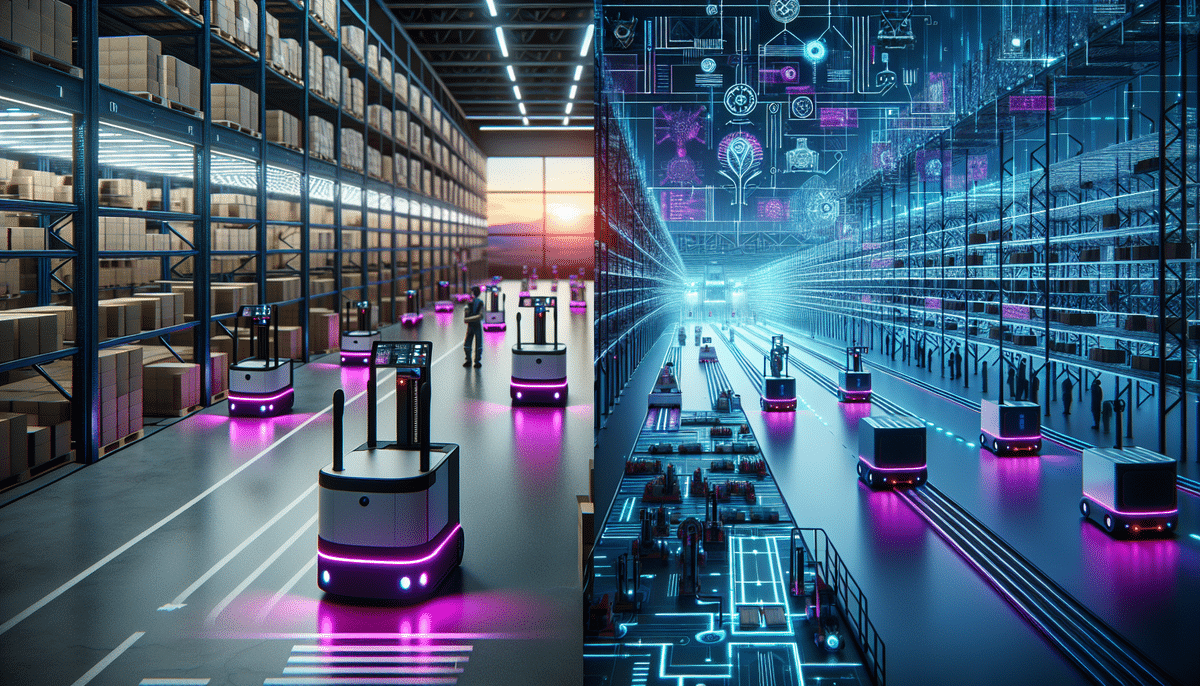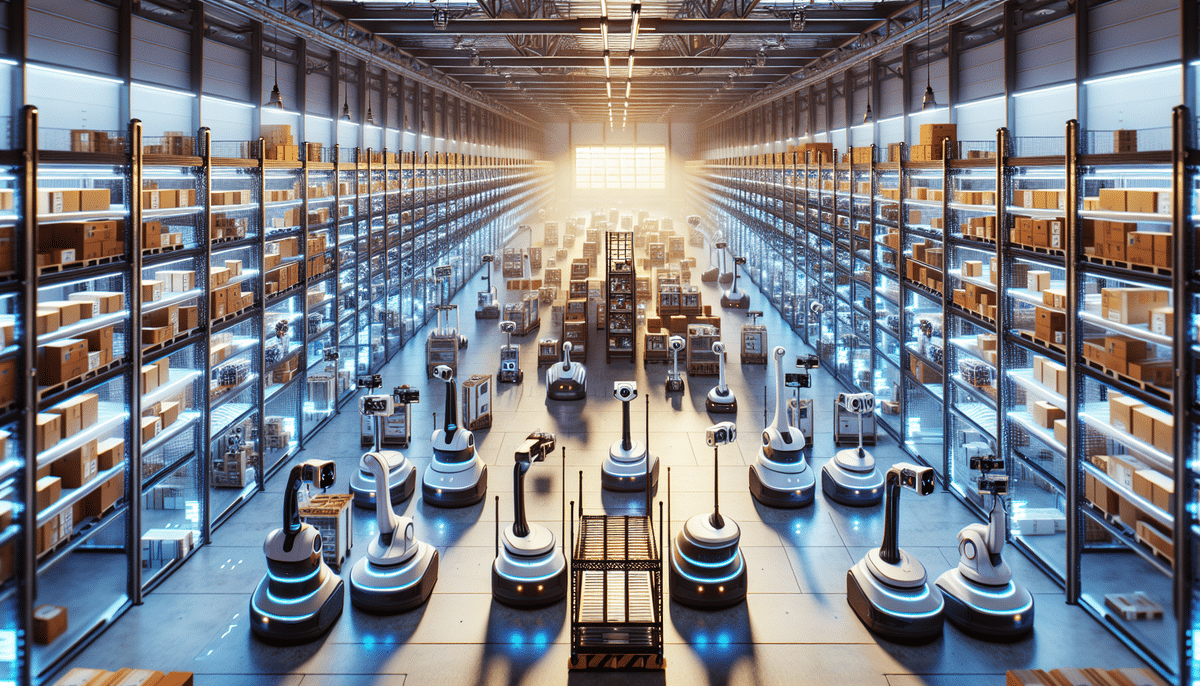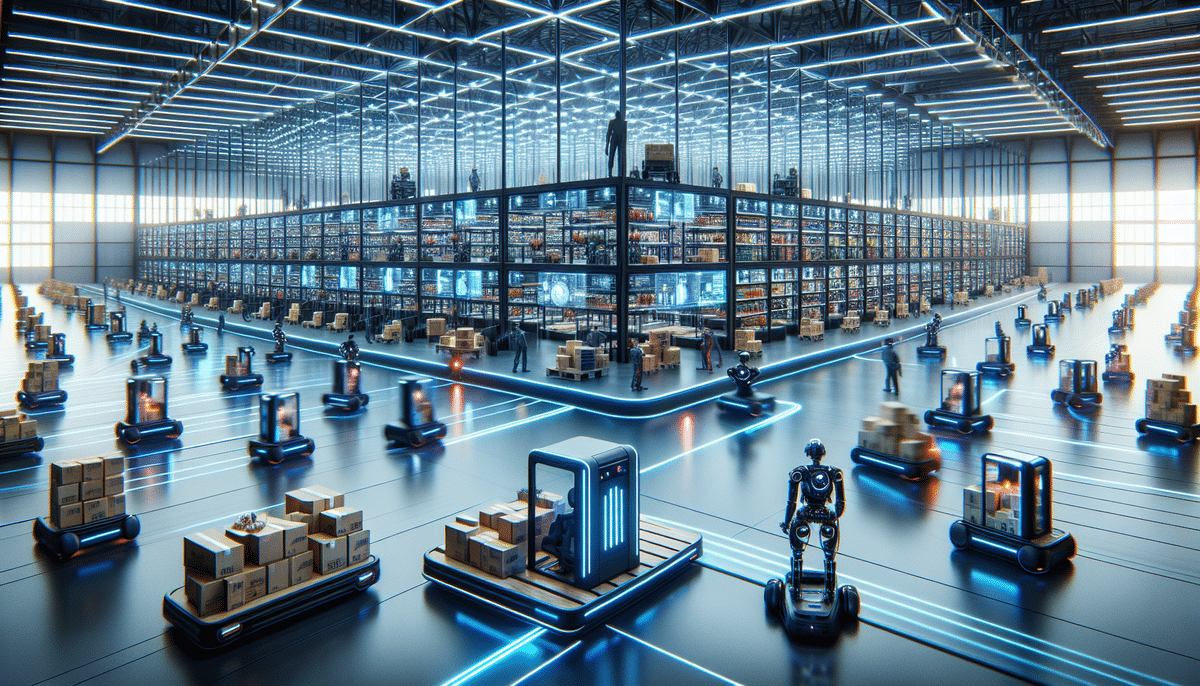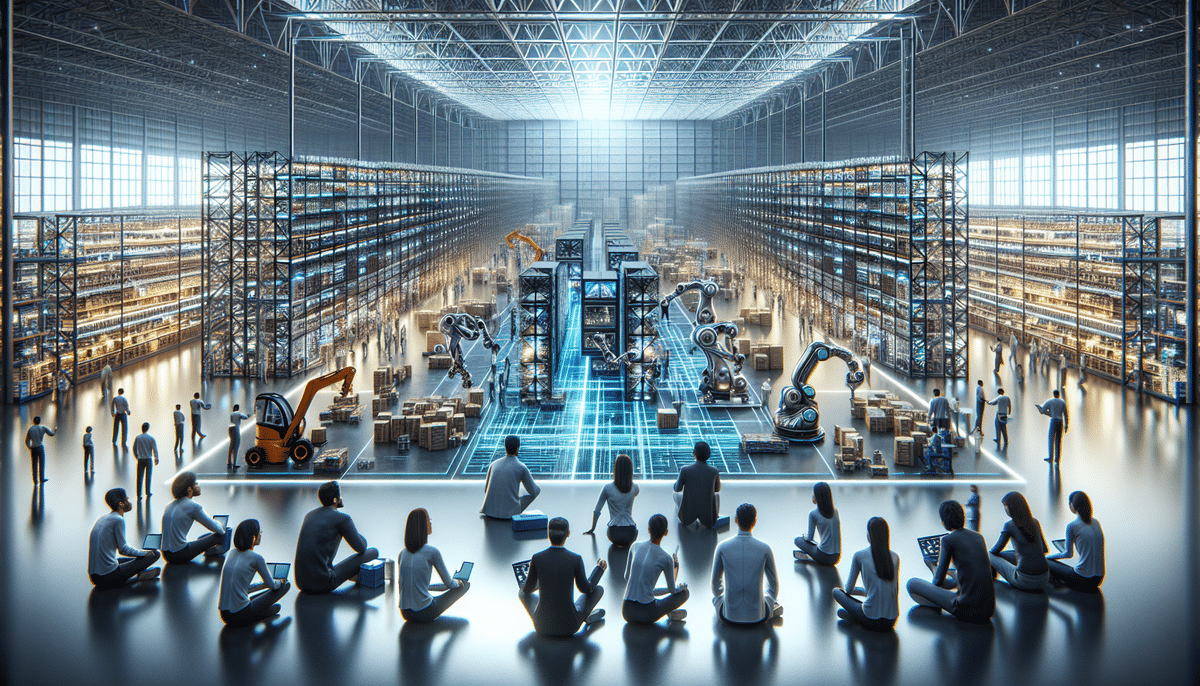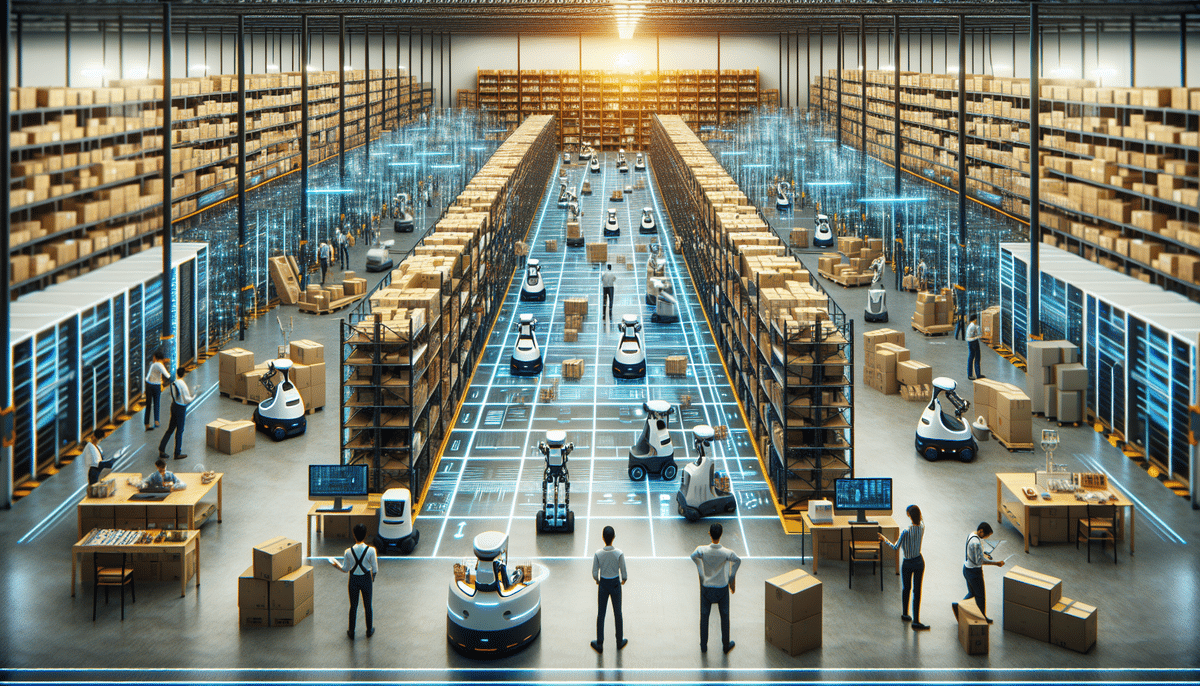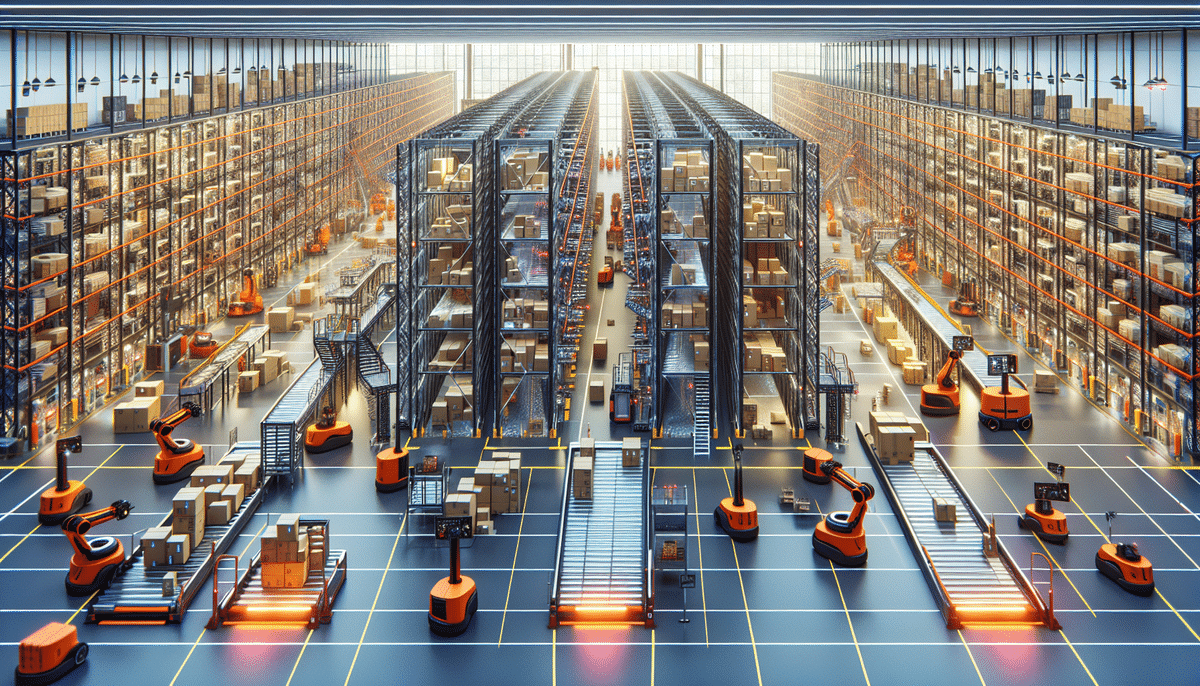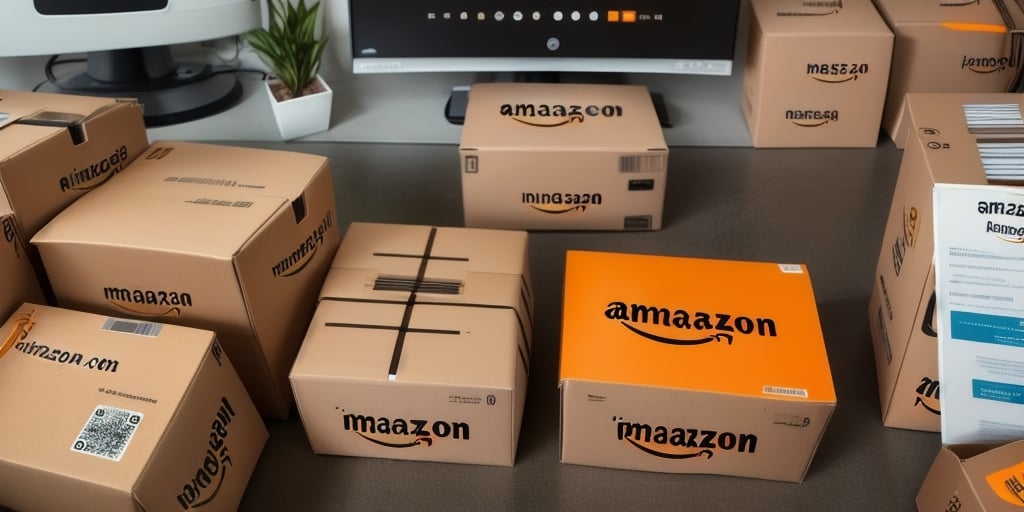Introduction: Understanding the Importance of Robotics in Warehousing
In today's fast-paced world of technology and innovation, robots have become an essential part of many industries including the warehousing industry. Automated systems have been making a lot of headway in the logistics industry, and robots have become an integral part of warehouse automation. Warehousing robots are used to perform various tasks such as storage, retrieval, packing, and transportation of goods inside the warehouse. In this article, we will be examining two of the most popular warehouse robots, Kiva Systems and Knapp to compare their features, advantages and the differences between each of them.
One of the main advantages of using robots in warehousing is the increased efficiency and productivity they bring to the industry. Robots can work around the clock without getting tired or needing breaks, which means they can complete tasks faster and more accurately than human workers. This not only saves time but also reduces the risk of errors and accidents in the warehouse.
Another benefit of using robots in warehousing is the cost savings they provide. While the initial investment in robotics technology may be high, the long-term benefits of increased efficiency and productivity can lead to significant cost savings for companies. Additionally, robots can help reduce labor costs by performing tasks that would otherwise require human workers, freeing up employees to focus on more complex tasks that require human skills and expertise.
Overview of Kiva Systems: History, Features, and Advantages
Kiva Systems is a robotic automation company that was established in 2003. The company was later acquired by Amazon Robotics in 2012. The Kiva robots are designed to move racks of inventory around the warehouse. The Kiva robots are small and mobile, similar to a Roomba vacuum robot, and can move inventory shelves to assembly lines where human workers can then pick items for shipping. Kiva robots move on top of tracks that are placed on warehouse floors. Kiva robots are highly efficient, and they can increase the speed of order fulfillment while reducing the time employees spend walking around the warehouse. They also reduce the risk of employee injury that could result from heavy lifting and walking for long periods.
One of the key advantages of Kiva Systems is their ability to adapt to changing warehouse needs. The robots can be easily reprogrammed to accommodate new inventory layouts or changes in the assembly line. This flexibility allows warehouses to quickly adjust to changes in demand or product offerings without having to invest in new equipment or retrain employees.
Another advantage of Kiva Systems is their ability to work in tandem with human workers. The robots can handle the heavy lifting and transportation of inventory, while human workers can focus on more complex tasks such as quality control and customer service. This collaboration between robots and humans can lead to increased productivity and job satisfaction for employees.
Overview of Knapp: History, Features, and Advantages
Knapp is a global market leader in the field of warehouse automation. The company has been in operation for over 70 years and has built a reputation for providing innovative and robust robotic solutions. The Knapp robots use what is commonly known as the shuttle system. The shuttle system utilizes carts to transport goods to and from the warehouse. Like Kiva Systems, Knapp robots also reduce the need for manual labor and can improve warehouse efficiency by reducing order processing time. The shuttle system design makes the robot ideal for large warehouses, while the cart shuttle can also be used with a conveyor system, allowing the robots to fulfill a variety of warehouse processes.
One of the key features of Knapp robots is their ability to adapt to changing warehouse needs. The robots can be programmed to handle different types of products and can be easily reconfigured to accommodate changes in warehouse layout. This flexibility allows companies to optimize their warehouse operations and respond quickly to changing market demands.
In addition to their flexibility, Knapp robots also offer a high level of accuracy and precision. The robots use advanced sensors and algorithms to ensure that products are picked and transported with minimal errors. This level of accuracy is particularly important in industries such as pharmaceuticals and electronics, where even small errors can have significant consequences.
How Kiva Systems Works: A Detailed Analysis of the Technology
Kiva Systems uses its unique robotic technology to retrieve inventory by bringing the inventory shelves to workers. These robots use cameras to navigate through the warehouse, and they follow a specific pattern using pre-defined tracks. Each robot can carry one shelf of goods, and multiple robots work together to move an entire set of shelves. The robots communicate with each other regularly to ensure their movements are coordinated. The system is designed to optimize efficiency, with robots able to take the best route to their destination based on a real-time map of the warehouse. The system also allows for seamless scaling, with the addition of more robots to suit an increased workload in peak seasons.
One of the key advantages of Kiva Systems is its ability to reduce the amount of time workers spend walking around the warehouse. With the robots bringing the inventory shelves to the workers, employees can focus on picking and packing orders, rather than wasting time searching for items. This not only increases productivity, but also reduces the risk of workplace injuries caused by repetitive walking and lifting. Additionally, the system is highly customizable, with businesses able to configure the robots to suit their specific needs and workflows. This flexibility allows for a more efficient and streamlined operation, ultimately leading to increased customer satisfaction and profitability.
How Knapp Works: A Detailed Analysis of the Technology
Knapp mainly uses its shuttle system to transport inventory efficiently. The Shuttle system is made up of thousands of carts that can move horizontally and vertically, and can hold multiple containers or trays. The warehouse management software system of Knapp uses algorithms that precisely track there inventory’s location and destination within the warehouse. The robots can access specific inventory locations to bring them to workers that will fulfill the order. This system allows for the prioritization of items, with higher-priority items being retrieved first, and the system can dynamically adjust reroutes if there are any issues with the initially planned route.
Key Differences between Kiva Systems and Knapp Robot Solutions
The significant difference between Kiva Systems and Knapp robots is the method of retrieving and transporting inventory. Kiva robots bring the inventory shelves to picking stations, while Knapp's shuttle system has workers pick orders from the shuttles. Additionally, the approach to warehouse storage is quite different, with Kiva favoring large intelligent robots for their inventory storage, whereas Knapp uses a shuttle system to move inventory around the warehouse with greater flexibility. Although Kiva robots are suitable for smaller warehouses, Knapp’s shuttle system is more scalable, making it ideal for larger warehouses.
Comparison of Kiva Systems and Knapp in Terms of Efficiency and Productivity
The efficiency of each system depends on the size and type of the warehouse, but both Knapp and Kiva Systems are designed to increase productivity and reduce the time it takes to fulfill orders. Kiva robots move faster than Knapp's shuttle system, and this makes them a better option for small warehouses with a limited range of inventory. Knapp's shuttle system, on the other hand, can handle large volumes of inventory and provides more flexibility and scalability. For larger warehouses that handle a lot of inventories, Knapp’s shuttle system is the better option as it can handle more complex warehousing requirements, and the software integration is more robust compared to Kiva’s Systems.
Comparison of Kiva Systems and Knapp in Terms of Cost-effectiveness
When considering the cost-effectiveness of Kiva robots compared to Knapp’s shuttle system, there are many factors to consider. The cost of implementing Kiva robots is lower than that of Knapp's shuttle system, but Kiva's maintenance cost is higher. Since Kiva robots move on the warehouse floor, there is the potential for floor wear, which can increase warehouse maintenance costs. Knapp’s shuttle system, on the other hand, has lower deployment costs, but it requires more sophisticated software to support its functionality. The software's cost is dependent on the size of the warehouse, the number of shuttles required, the inventory, and the order volume. With this cost-analysis in mind, Knapp is a more cost-effective solution in larger warehouses and with medium to high inventories.
Comparison of Kiva Systems and Knapp in Terms of User-friendliness and Maintenance
When looking at the user-friendliness of Kiva Systems and Knapp, it's worth noting that both systems are designed to require minimal human intervention. That said, deployment and maintenance are more straightforward for Kiva Systems. Since the robot's systems move on the warehouse floor, maintenance is easily accessible, and they have fewer moving parts than Knapp's Shuttle System. Knapp's Shuttle System is more complex and requires regular maintenance of the tech components, which, when needed, could be expensive. With Knapp’s Shuttle System, regular inspections are essential to minimize the risk of downtime, which is more time-consuming for warehouse managers.
Case Studies: Examples Demonstrating the Usefulness of Kiva Systems and Knapp Robots in Warehousing
In 2012, a major clothing retailer implemented the Kiva System in their warehouse facility to improve efficiency and reduce labor costs. The company reported that the Kiva solution resulted in a 25% reduction in overall fulfillment time and a 40% reduction in employee walking distance. Another example is the implementation of Knapp’s shuttle system by a leading online home furnishings retailer in the United States. This brand faced challenges with order record keeping and inventory control, and subsequently started to implement Knapp’s Shuttle System across its warehouses, resulting in a significant improvement in order processing times, quick inventory placement, and reduced labor costs.
Future Trends in Robotics for Warehousing: What Lies Ahead for Kiva Systems and Knapp?
The future of warehousing is looking quite promising as more and more companies continue implementing the latest technologies, including robotics. In the coming years, predictions point to stronger interconnectivity as the next trend, which will involve more complex coordination between robots working together to manage warehouse processes. This trend will likely lead to the continued evolution of the current robot systems, which will only enhance their capabilities and make them more efficient. There is also a growing interest in quick development and implementation of robot solutions that cater to non-rectangular or round warehouse shapes to ensure that all spaces are utilized.
Conclusion: Which Robot Solution is Best Suited for Your Warehousing Needs?
The choice between Kiva Systems and Knapp's shuttle system depends on your warehouse requirements. For small and mid-sized warehouses with a limited range of inventory, Kiva Systems' robots are more cost-effective and efficient. However, for larger warehouses with complex inventory requirements, Knapp’s shuttle system is the best fit as it offers more scalability and flexibility with the use of software integration. With the ever-evolving technological landscape, it's essential to consider that other robotic solutions might emerge, and businesses need to remain flexible to adapt to meet their ever-changing warehousing needs.


